Democracy’s Missing Architects: A Readout from the Women Moving Millions Summit
Why Democracy’s Future Depends on Women Calling the Shots, Rewriting the Playbook, and Leading the Resistance
—When we talk about democracy-building around the world, women’s participation is treated as a key measure of success — a visible sign of a healthy democratic practice. It’s taken as a given: where women are engaged in political life, democracy flourishes.
But here in the U.S., we rarely ask what women’s political leadership — or lack thereof — says about the health of our democracy. We talk about women voters, not women leaders. We focus on turnout, not tenure. We celebrate women’s contributions as moral ballast — the voters, volunteers, and validators who keep the republic upright — but rarely as its architects or engineers.
Political leadership in the United States remains overwhelmingly male — from Congress to state legislatures, from think tanks to foundations, from party committees to donor tables. Even across the institutions charged with safeguarding democracy, men still hold most of the power. This imbalance isn’t just unfair; it’s untenable.
After a billion-dollar election cycle that left Democrats reeling and many progressives searching for answers, I found myself in Brooklyn, in a packed room at the Women Moving Millions Summit, with three women who have spent their careers on the frontlines of democracy. We gathered not to perform optimism or hope, but to speak honestly — about exhaustion, misalignment, and what comes next.
Together, we made the case for what should by now be obvious: democracy only survives when women are at its center — not as symbols of progress, but as strategists, architects, and custodians of the plan.
Below is a readout from the Women Transforming the Future of Politics Panel at the Women Moving Millions annual Summit in Brooklyn, New York, October 15-17, 2025. To learn more about WMM or to join its community, click here.
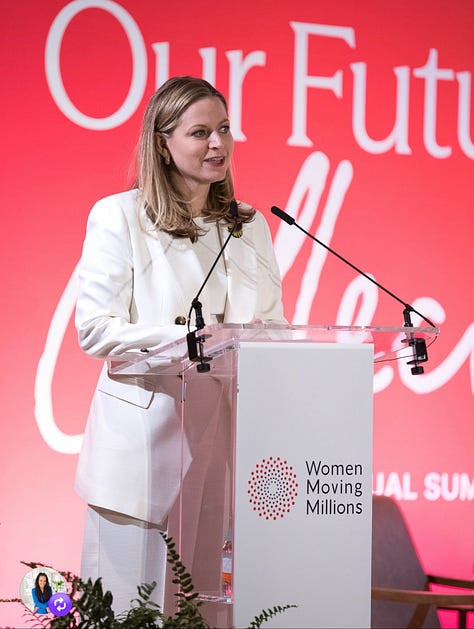
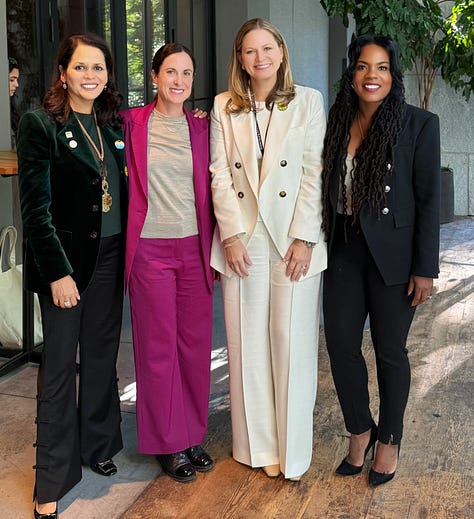
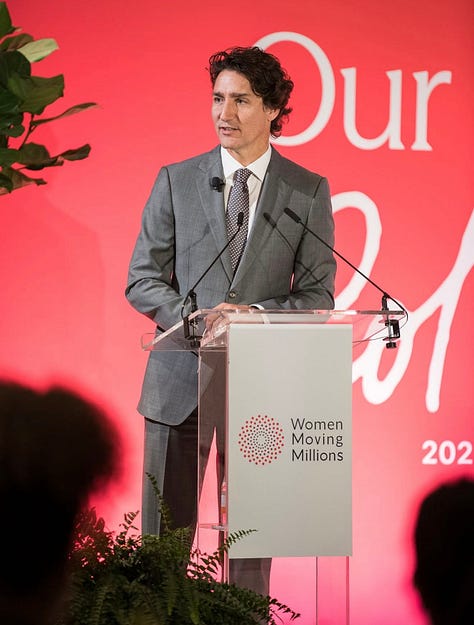


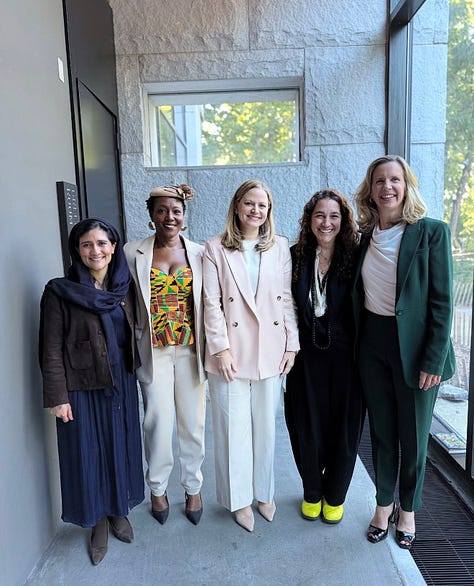

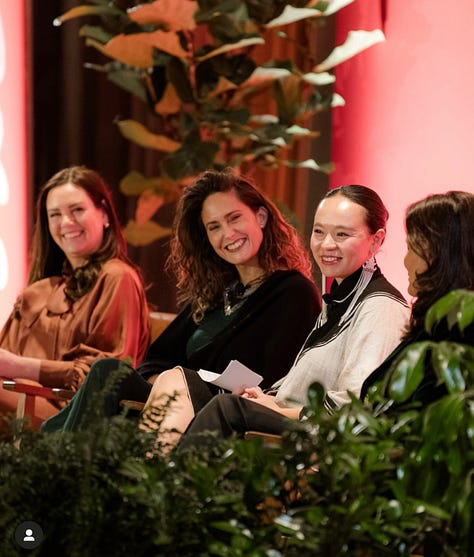
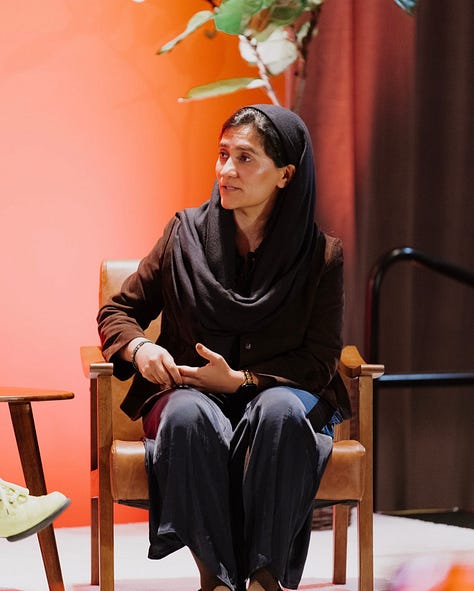
In The Blue Room
The Blue Room at the 1 Hotel Brooklyn Bridge was nearly set when I walked in, clutching a stack of papers—more than I needed. My questions were prepared, and I had revised some of them that morning after listening to the opening session speakers.
I felt nervous, but not from anxiety; it was the kind of energy that comes from wanting to get it right—to lead a conversation that would matter tomorrow, the next month, or even next year. I wanted it to be sticky.
I took a seat in the front row, pen still in hand, making last-minute edits. “We need more chairs,” someone called out as staff hurried in and out to grab extras. The session was sold out.
Women were already filing in — donors, doers, organizers, advocates, and everyone in between. The room hummed with the kind of energy that builds when women who’ve been holding the line finally have room to exhale.
Moments earlier, the main stage had opened with a jolt — Our Collective Future, the conference theme, ricocheting through the ballroom. But in the Blue Room, our work felt quieter and more deliberate. This was where the slogans would fall away and the real conversation about power would begin — not the kind conferred by title or office, but the kind that holds democracies together: who has it, who doesn’t, and who should.
I recognized faces from across the movement: Kathy Spillar of Ms. Magazine, Amanda Litman of Run for Something, Celina Stewart of the League of Women Voters, Chastity Lord of the Jeremiah Program, and Liuba Grechen Shirley of Vote Mama. Familiar or not, we were all there for the same reason — to figure out how to win, how to build power, and how to get it right next time.
A Familiar Entry Point
We began where most conversations about power rarely do —with what’s working. After a bruising 2024 election and more than a billion dollars spent, I didn’t want to start in despair. I asked the panelists to start with two things we’re getting right and one thing we could be doing better or differently. It was a way to locate ourselves not only in what’s broken but in what’s still holding.
Perched on borrowed barstools beside me were Erin Vilardi, founder of Vote Run Lead; Mũthoni Wambu Kraal, founder of Women’s Democracy Lab; and EunSook Lee, executive director of the AAPI Civic Engagement Fund. Each has spent decades building the scaffolding of women’s political leadership — not as an act of charity, but of survival.
Erin smiled first. Let’s take a moment to recognize how far we’ve come. In the past twenty years, the number of women — and women of color — in public office has soared. Women now make up record shares of state legislatures, and in three states — New Mexico, Colorado, and Nevada — they hold the majority.
And we’ve trained thousands of women to run and win,” she said. “That’s real progress. But progress isn’t the same as power.”
There was laughter — the weary, knowing kind.
“What we’re getting right,” said Mũthoni, “is that we keep showing up — even after loss, even when the system wasn’t built for us. What we could do better is stop trying to fix something that was never designed to hold us in the first place.”
Soft murmurs rippled through the audience — those low mm-hmms that mean a truth had landed.
I wasn’t satisfied. I wanted to push. In our pre-conversation, Mũthoni had mentioned that after what was a devastating loss for Democrats, she went straight back to work. That image stayed with me — the refusal to pause, to sit in the loss.
On the surface, it sounded noble, even heroic — like a mother stretched thin, doing everything because no one else will. We praise her endurance but rarely ask what it costs or what she needs. I wanted to question that instinct — to move forward so quickly — and ask what it kept us from doing.
Does it make it harder for us to reflect, to recalibrate, to change course for what comes next? Before I could take us there, and possibly off topic, EunSook chimed in.
“What we’re getting right is that women are leading. When we began our work more than a decade ago, about half of the leaders were women; today, nearly ninety percent are. That shift shows how women have become the face of leadership in our community — but as they step into public roles, the challenges intensify. The scrutiny, often rooted in gender bias, is harsher and more personal.
What we need to do differently is make sure that leadership is sustainable. Right now, it’s costing too much.
That word — sustainable — hung in the air.
Tossing the Old Playbook
In rooms like this, where donors and doers sit side by side, honesty and optimism can become a kind of performance — careful, curated, and self-protective. Panelists tend to spend their minutes at the mic polishing their victories, reciting impact metrics, and offering proof of worth. But this conversation was different. We were setting aside our individual missions in service of the larger, collective project.
EunSook pivoted us toward the moment. “We had the first woman of color at the top of a major party ticket — and she had 107 days. How does that work for us? Is that the only time a woman of color is given that opportunity — when there’s no other choice?”
I’m not here to defend or praise her, she said, that’s not the point. She has to tell her story. But it’s not just her story; it’s ours too. And if we don’t understand what happened, the story will harden — that women of color shouldn’t run for president, that they can’t win.
The conversation was going exactly where I’d hoped it would. I decided to push further, poking at the wound that was the 2024 election.
Erin, I want to go there with you. You’ve said women run for office because they see something broken and want to fix it — they see incompetence and step in, especially when the stakes are high or things are falling apart.
So, let’s be radically honest. We lost big in 2024. That’s no secret. When I went looking for answers, what I found is that our playbook no longer works. Think about it: four states passed abortion protections and elected Donald Trump. In New York, some voters backed both AOC and Trump. The traditional tools — hearings, press conferences, door knocking, even down-ballot voting — don’t hold like they used to.
We assumed that if you voted for Harris, you’d vote for everyone else. But in 2024, voters didn’t just cast ballots — they shopped for politics, picking candidates like streaming subscriptions, building their own political bundles based on personal needs.
So if the old tools no longer work, what does? What strategies can break through in a culture driven by spectacle, grievance, and self-interest? How do we re-engage people and rebuild connections? What does power-building look like in an era when politics often feel personal, portable, and transactional?
The air seemed to tighten as everyone leaned in.
Erin didn’t hesitate. That’s the question — and it’s what all of us are working on. For me, the answer isn’t new tools—it’s new power centers.
I’ve been doing this nonpartisan work for 22 years, and I think we can say safely — especially in this room — the Democratic Party has lost its way.
There have been numerous opportunities for generational change and an intersectional feminist agenda — and those chances were either missed, if we’re being generous, or ignored, if we’re being honest.
The right is winning on some of our issues: care, health, and belonging. If the party isn’t listening, we have to build power outside of it.
For example, when I asked Democratic operatives about messaging on that “big, ugly bill,” they told me there wasn’t any. The progressives and moderates couldn’t agree on what to say. So, to your question — about new tools — I think the answer is what we’ve been hearing all morning: it’s us. It’s not the boys in D.C. with laptops declaring that abortion isn’t a winning issue. They’re misreading the data, misunderstanding the story, and missing the moment.
Mũthoni jumped in. “I keep coming back to vision. We talk about power, strategy, and winning — but where’s our affirmative vision? And who’s shaping it?
The Democratic Party isn’t what it used to be. It’s not one big house anymore — it’s fragmented. Everyone’s got their own committee and agenda — the DNC, the DCCC, the mayors, the AGs — and it’s made alignment nearly impossible. If we’re waiting for the so-called power players to get it right, we’ll be waiting a long time.
As we move further from 2024, voters aren’t buying what’s being sold from the top. The best ideas — the most creative, courageous ones — are coming from the ground: organizers, local leaders, women doing the work. They’re not the power brokers, but that’s precisely where the next vision has to come from. The next playbook starts with us.”
EunSook nodded. “Vision has to come from people and communities. For me, it always comes back to organizing — but organizing has to evolve.
“After COVID, everything changed. We’re connected across generations and languages — WhatsApp, KakaoTalk, Signal — our new gathering spaces. But even with all the technology, it still comes down to relationships.
People talk about “third spaces” — places that aren’t home or work but where trust and belonging are built. If you need housing help, or immigration support, or just someone to stand with you, you go to the places and people you know and trust first. For so many, that’s their community organization.
“That’s where organizing begins, and where trust is built, in communities. The tools may change, but what moves people remains the same: relationships, trust, and showing up for each other.”
I didn’t want to lose what had just surfaced, so I latched on.
What I’m hearing from all of you is that we need vision, strategy, connection — and an affirmative plan. A way forward rooted in our values and leadership, one that truly reflects who we are.
Being in the room is not the same as owning the building
When I asked what 2024 had taught us, Erin didn’t mince words. “We’ve spent twenty years getting women into office. That’s progress. But it’s not transformation. Representation alone won’t save democracy. We keep acting like being in the room is the same as owning the building.”
Heads nodded across the room.
Muthoni picked up the thread, “Women are treated as the conscience of democracy, the ones who rush in when it’s on fire — but never as the architects. We’re the emergency response team for a system we didn’t design.
Even in the Democratic Party, women do the mobilizing and organizing; men keep the microphones and the money. This imbalance is so routine it’s rarely named: women sustain democracy, but men still design and direct it. We’ve been winning the small fights and losing the big ones.”
The room fell quiet for a moment — the kind of silence that signals agreement. EunSook broke it, shifting the focus from structure to safety.
She added, “And 2024 made something else clear — leadership has become unsafe for women. The harassment, the threats, the online abuse — we can’t just push women into power and hope they survive it.”
The Billion-Dollar Boom—and the Bust
Matching aligned donors with strategies and causes is what Women Moving Millions does best — and this room was proof. Around us sat women who move resources and women who move the work. But between them, a conversation was still missing. I decided to start it.
Across the field, there’s a palpable sense that donors have pulled back—gone quiet, into planning mode, or into retreat, I said. The 2024 election cycle saw more than a billion dollars poured into Democratic campaigns and infrastructure at every level. It was supposed to be the cycle that cracked the code: how to mobilize, how to message, how to win. But we didn’t.
Now, in the aftermath, we’re in what feels like a bust. The infrastructure that powered that work is contracting. Organizations, especially those led by women, are scaling down and bracing for what comes next.
“What’s going on?” I asked. Is it fatigue—from the nonstop pace and emotional toll of this work? Is it fear, a lack of vision, or the current administration? A lack of imagination about what power-building really requires?”
EunSook spoke first. “If it were a billion dollars,” she said, “I didn’t see any of it.”
The room broke into laughter, that knowing kind that says we’ve all been there. Then she leaned forward, her tone shifting. “That tells you everything. The money went everywhere and nowhere. If we want different outcomes, we need a different plan. Because money follows a plan—and as Mũthoni said earlier, an affirmative vision. It always has.”
Instead of asking why the funding isn’t there—fatigue, fear, whatever the reason—we should be asking, what’s the plan? What are we offering that’s bold enough to believe in?”
I agreed, but pressed further. “Where’s the disconnect? Donors fund “democracy” or “women and girls” as separate silos, rarely linking the latter to power or politics. How do we connect the dots?
Mũthoni didn’t miss a beat. “Donors say they want transformation, but they fund like they’re buying insurance. You can’t buy transformation. You have to invest in it. If you’re not funding holistically, you’re wasting your money. Conservatives aren’t making that mistake — they’re building a culture of belonging.
Erin added, “Women are democracy’s infrastructure. We train candidates, run campaigns, turn out voters — but we’re still not trusted to run the show. Women are treated as a special interest instead of the majority stakeholders in American democracy that they are. We have to fund differently—to take bigger risks, to bet big on our own.”
“And we can’t rebuild democracy with the same tools that broke it,” said EunSook. “Care is infrastructure. Protection is infrastructure. Rest is infrastructure. Until we build that, we’re setting women up to fail.”
I looked around the room — faces set with recognition and resolve. “Maybe the real question,” I said, “isn’t how we recover from the bust. It’s how we build something that lasts.”
Designing our Collective Future
By the end of our session, it no longer felt like a panel. It felt like a circle, the kind that forms when people feel seen, heard, and understood.
Questions lingered in the air:
We say we want women in power — but what about those who use that power against us?
How do we rebuild trust?
What does feminist governance actually look like?
And what does solidarity mean when the work gets hard?
The answers came, steady and grounded:
“Solidarity,” said Mũthoni, “is showing up when a woman’s being attacked. It’s correcting misinformation before it spreads. Staying in the room when it’s uncomfortable. Coalition isn’t a hashtag — it’s a muscle.”
“You don’t go alone,” said EunSook. “You rest. You build teams that care for you. Sustainability isn’t indulgent; it’s strategy. If we want women to lead, we have to make leadership livable.”
“Feminist governance,” said Erin, “is transparency. It’s collaboration over ego. Budgets that tell the truth about what we value.”
“It’s policies that make care visible,” added Mũthoni. “Paid leave, childcare, humane schedules — the real infrastructure.”
“And humility,” said EunSook. “Systems collapse under their own certainty. Our strength is curiosity — the willingness to do things differently.”
Mũthoni ended the round. “We start by telling the truth. We called it a movement when it was just a moment — and that’s okay. Now we begin again, slower, wiser. We can’t pivot our way to justice. It takes relationships. It takes care.”
The room fell quiet with the kind of silence that means people are starting to imagine what could come next.
I stood, no longer moderating but joining. “Everything we’ve said points to one thing — building our collective future. Together. In coalition. I believe in starting with the end in mind — saying out loud what we truly want. So what kind of political future do we want — for women, for our families, for democracy, for the next generation? If we fund boldly, with intention and clarity, what could the next decade — the next century — of women’s political power look like?”
For sure, the architects were already in the room.



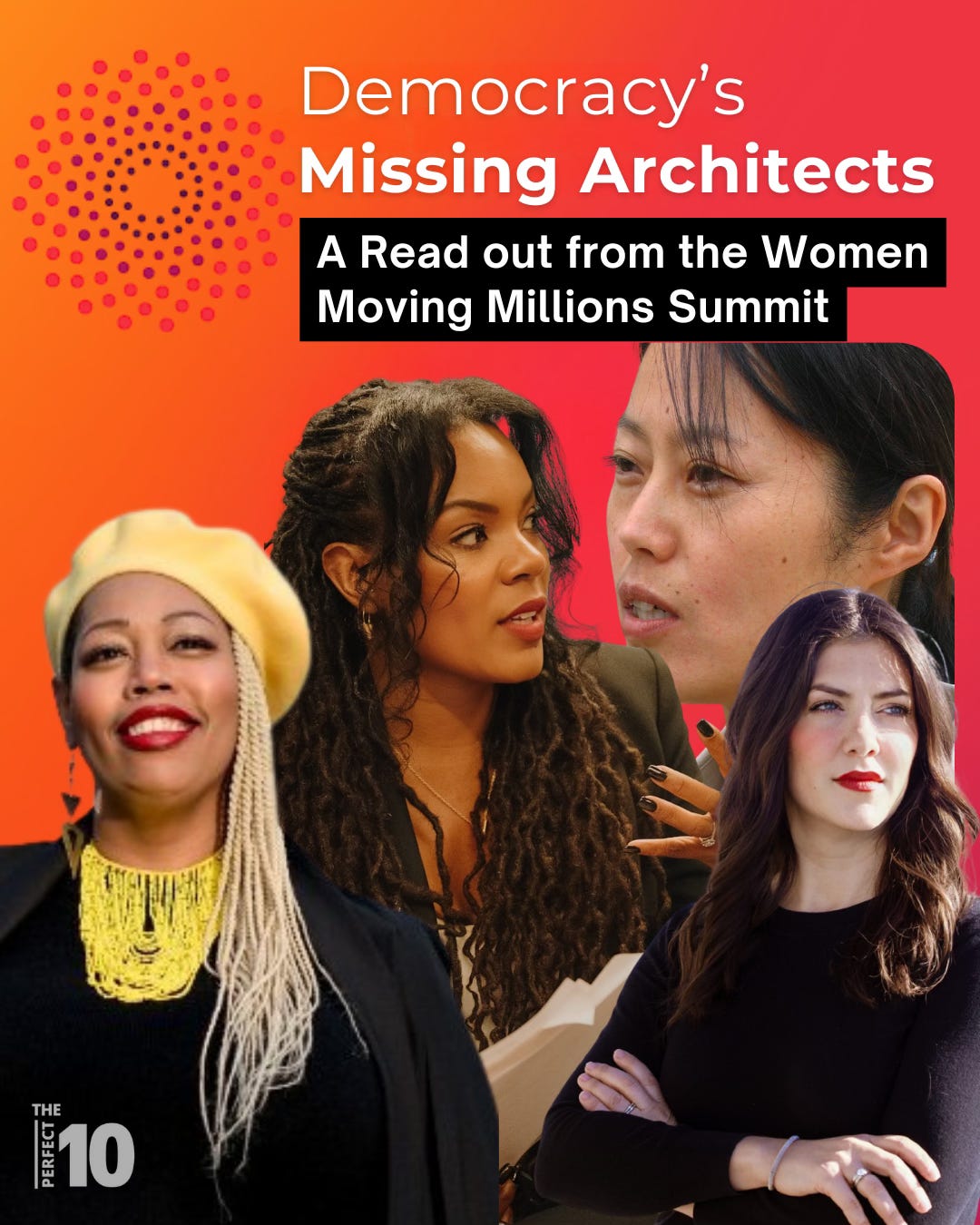
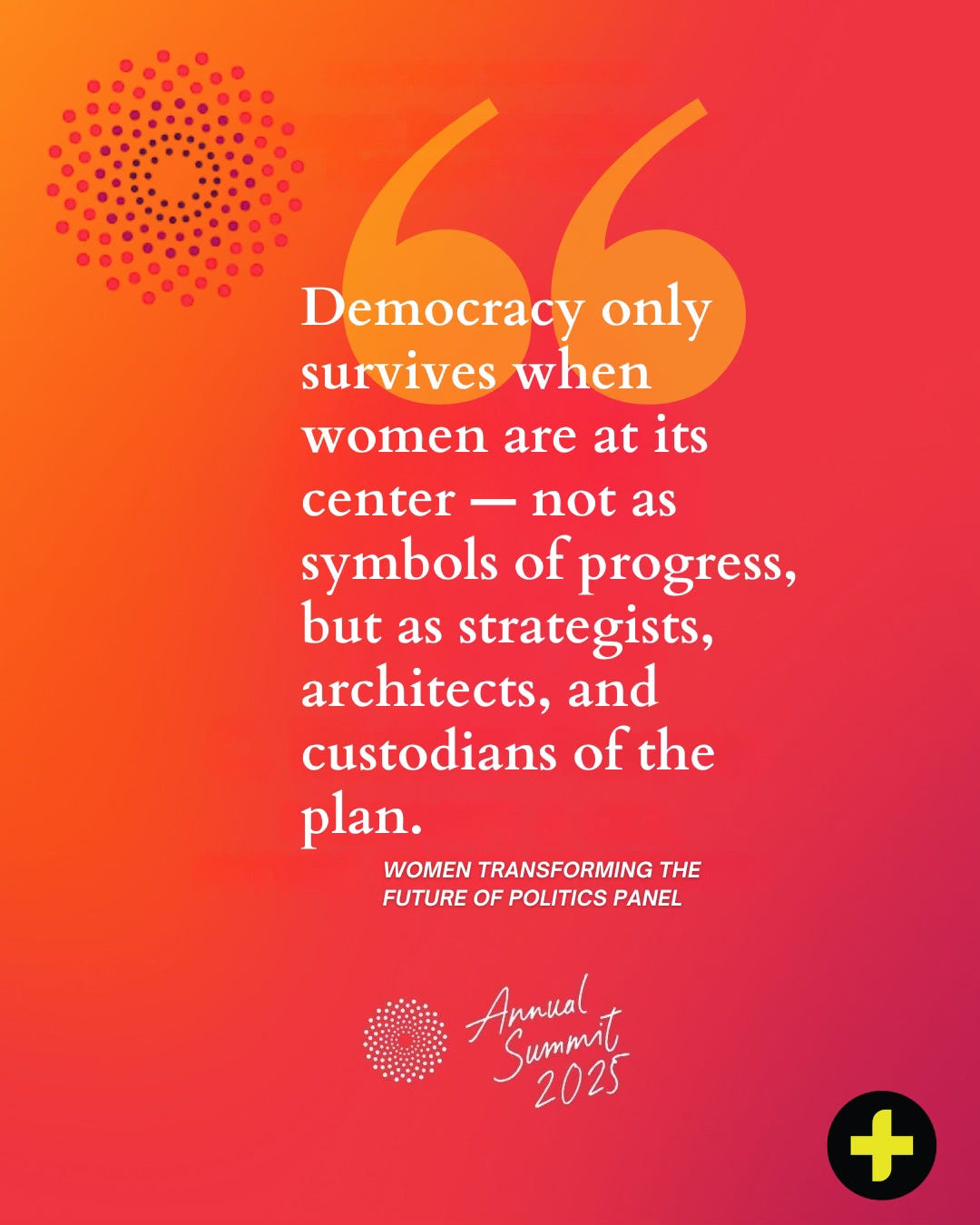
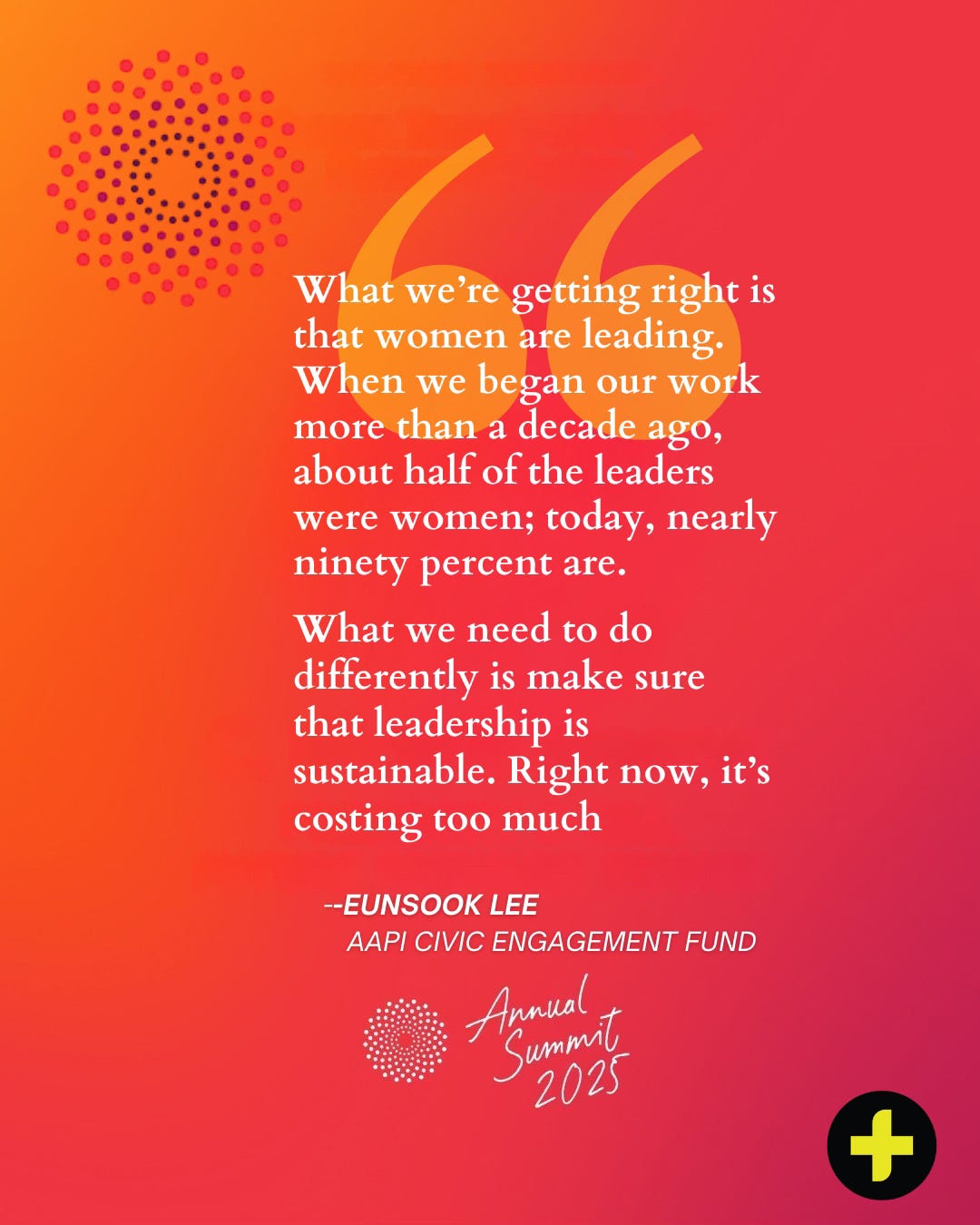

'We assumed that if you voted for Harris, you’d vote for everyone else. But in 2024, voters didn’t just cast ballots — they shopped for politics, picking candidates like streaming subscriptions, building their own political bundles based on personal needs.'
Wow. So many striking points here.